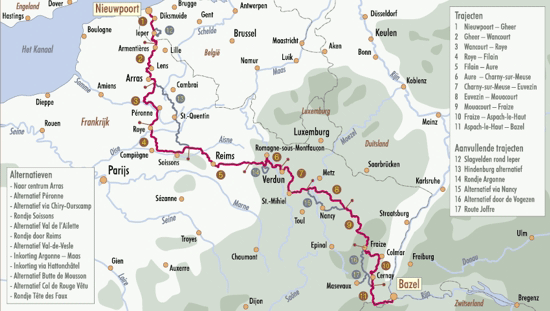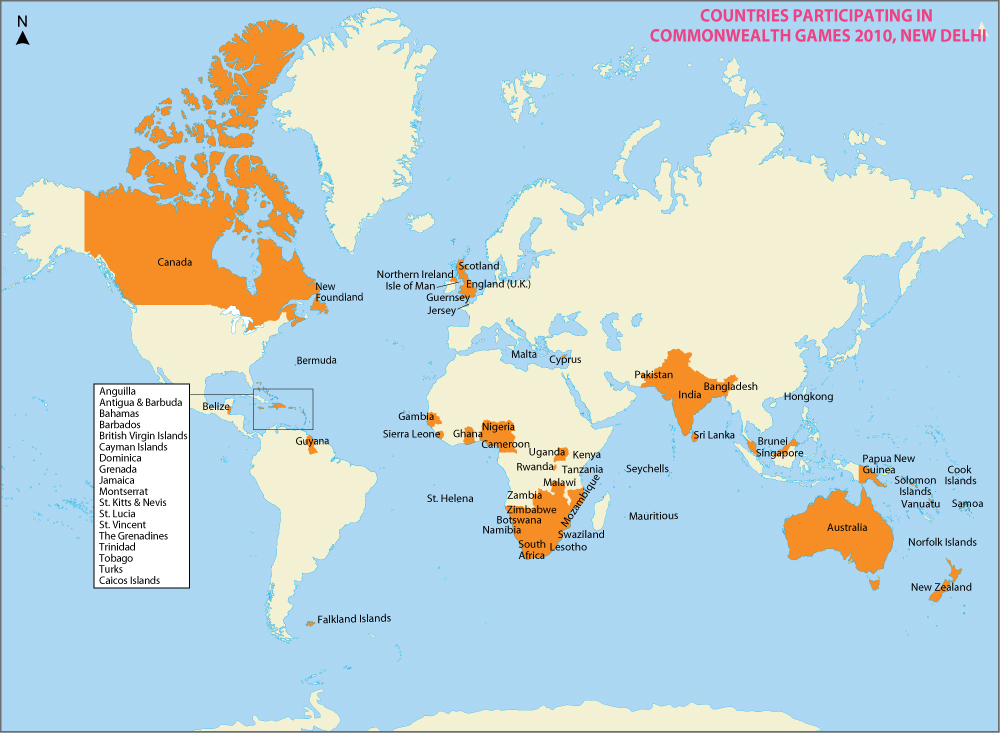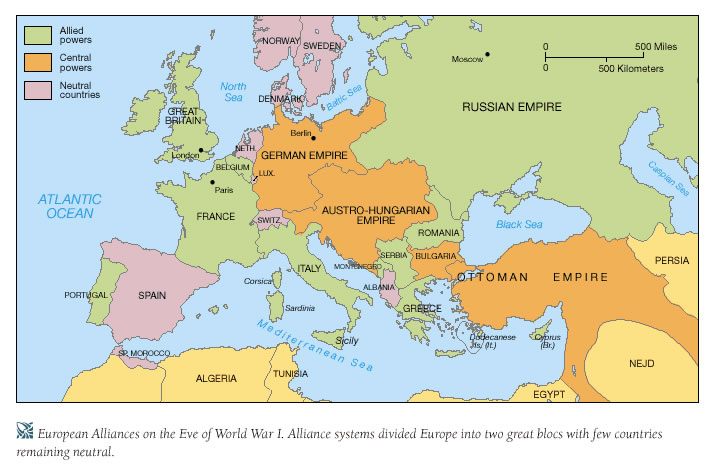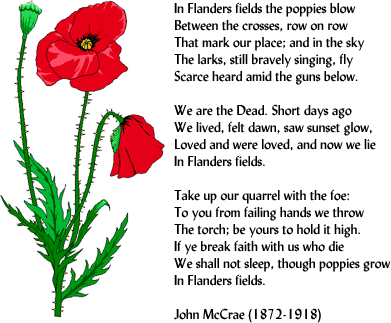Westfront in Belgium


Maps of the Westfront from Nieuwpoort (Belgium) to Belfort (France)
People were convinced that the war did not last as long. Some countries remained neutral, because they didn't want to be involved in a conflict: Belgium, Netherlands. Germany used the Schlieffenplan to conquer France. The race to the westcoast of France had begun. The allies resisted at the frontline .
| Germany | Allies |
| Germany | France and the overseas regions |
| Austria-Hungary | The British Commonwealth |
| Belgium | |
| United States of America | |
| ... |




Het Westfront was een lijn van 750 km in België en Frankrijk. In België liep het front van Nieuwpoort aan de Belgische kust (Noordzee) langs de Ijzer naar Diksmuide en zo verder in een boog rond Ieper (de Ieperboog) tot aan de Franse grens via Wijtschate, Mesen en Ploegsteert. Via Noord-Frankrijk liep de frontlijn door tot aan de Somme (rivier) en Verdun (aan de Maas) en stopt in de stad Belfort op de Frans-Zwitserse grens. De frontlijn verschoof nauwelijks in 4 jaar tijd. Zowel Duitse als geallieerde troepen groeven zich in langs beide kanten van het front. Daarom werd Wereldoorlog I een loopgravenoorlog genoemd.
Mensen waren overtuigd dat de oorlog niet zo lang ging duren. Bovendien bleven bepaalde landen neutraal: België, Nederland. Duitsland gebruikte het Schlieffenplan om Frankrijk zo snel mogelijk te veroveren. De race naar de Franse Westkust was ingezet. De geallieerden boden weerstand aan de frontlijn.
| Duitsland | Geallieerden |
| Duitsland | Frankrijk en de kolonies |
| Oostenrijk-Hongarije | Het Britse Gemenebest |
| België | |
| Verenigde Staten | |
| ... |
Het Britse Gemenebest leverde Britse soldaten aangevuld met troepen uit overzeese gebieden Australië, Nieuw-Zeeland, India, Canada, Zuid-Afrika). Frankrijk zette soldaten uit de Afrikaanse kolonies in: Senegal, Marokko, Algerije, Tunesië, ... Tijdens Wereldoorlog I vochten soldaten uit alle continenten aan het Westfront. De oorlog sleurde gans de wereld mee. Uiteindelijk waren de verliezen heel zwaar: meer dan 13 miljoen doden, gewonden, geesteszieken en vermisten. Per 10 slachtoffers telde men 2 doden, 6 gewonden/zieken/gestoorden en 2 vermiesten.
Aan beide kanten van de frontlijn hadden troepen zich ingegraven in loopgraven. Tussen de loopgraven van de Duitsers en de geallieerden was er een niemandslandzone. Die zone was een modderige omgeploeterde strook overspannen met prikkeldraad en bezaaid met mijnen. Het enige wat er nog groeide waren klaprozen. De klaproos is het symbool van Wereldoorlog I. Dit lees je in het gedicht 'In Flanders Fields' van John McRae. De rode kleur van de klaproos is ook een verwijzing naar het bloedvergieten.
De levensomstandigheden in de loopgraven waren onmenselijk. Modder en water zorgden infecties en onderkoeling. Soldaten kampten met afstervende ledematen. Ratten werden gelokt door etensresten in de loopgraven. De knaagdieren waren verspreiders van infecties en ziektes. Artilleriegevechten konden dagen onafgebroken duren. Tijdens Wereldoorlog I werd voor het eerst gifgas gebruikt. Zowel Duitsers als geallieerden gebruikten gifgas. De eerste gifgasaanval dateert van april 1915 bij Ieper. Gifgas veroorzaakte vreselijke irritatie en brandwonden. Mosterdgas kreeg de naam yperiet naar de stad Ieper waar gifgas voor het eerst als chemisch wapen gebruikt werd.
(PL)
Front zachodni był linią o długości ok. 750 km, przebiegającą przez Francję i Belgię. W Belgii prowadziła ona od wybrzeża Morza Północnego w Nieuwpoort, wzdłuż rzeki Yser do Diksmuide a następnie do granicy francuskiej przez Wytschaete, Messines i Ploegsteert. Od północy Francji linia frontu stykała się z rzeką Sommą, miastem Verdun i kończyła się w Belfort na francusko-szwajcarskiej granicy. Linia ta uległa w ciągu czterech lat wojny bardzo niewielkim zmianom. Zarówno niemieckie, jak i alianckie oddziały okopały się po obu jej stronach. Z tego powodu działania prowadzone w czasie I wojny światowej nazwano wojną pozycyjną. Ludzie byli przekonani o tym, że wojna nie będzie trwała długo. Niektóre kraje pozostały neutralne, ponieważ nie chciały angażować się w ten konflikt. Wśród nich były Belgia i Holandia. Wszczynając wojnę i dążąc do podbicia Francji, Niemcy próbowalii zrealizować tzw. plan Schlieffena. Rozpoczął się wyścig do zachodniego wybrzeża Francji. Alianci stawili opór na opisanej wcześniej linii frontu. Brytyjczycy przysłali swoich żołnierzy wspartych przez oddziały sprowadzone z terytoriów zamorskich: Australii, Nowej Zelandii, Indii, Kanady i Południowej Afryki. Francuzom również towarzyszyli żołnierze z kolonii afrykańskich: Senegalu, Maroka, Algierii, Tunezji. W czasie I wojny światowej na froncie zachodnim walczyli żołnierze ze wszystkich kontynentów. Konflikt przemienił się w masakrę. Straty były bardzo wysokie: 13 milionów poległych, rannych, psychicznie chorych i zaginionych żołnierzy. Średnio na 10 ofiar przypadało: 2 zabitych, 6 rannych lub chorych oraz 2 zaginionych. Obszar między liniami okopów był ziemią niczyją. Był to bagnisty pas terenu z rozciągniętym drutem kolczastym i usiany minami. Jedyną widoczną "żywą" rzeczą, która tu pozostała, były maki. Z tego powodu kwiaty te stały się symbolem I wojny światowej. Znalazło to odzwierciedlenie m.in. w wierszu "Na polach Flandrii" Johna McCrae. Czerwony kolor kwiatu nawiązuje do rozlanej krwi. Warunki życia w okopach były straszliwe. Błoto i wilgoć przyczyniały się do powstawania infekcji i wyziębienia organizmu. Po okopach biegały szczury, poszukując resztek jedzenia i jednocześnie roznosząc choroby. Ostrzał artyleryjski mógł trwać nieustannie przez kilka dni. W czasie I wojny światowej po raz pierwszy użyto gazów bojowych. Nastąpiło to w kwietniu 1915 r. w bitwie pod Ypres. Użyto tam najpierw chloru, a w roku 1917 inny rodzaj środka chemicznego, nazwany iperytem lub gazem musztardowym. Powodował on poważne podrażnienia i poparzenia.
